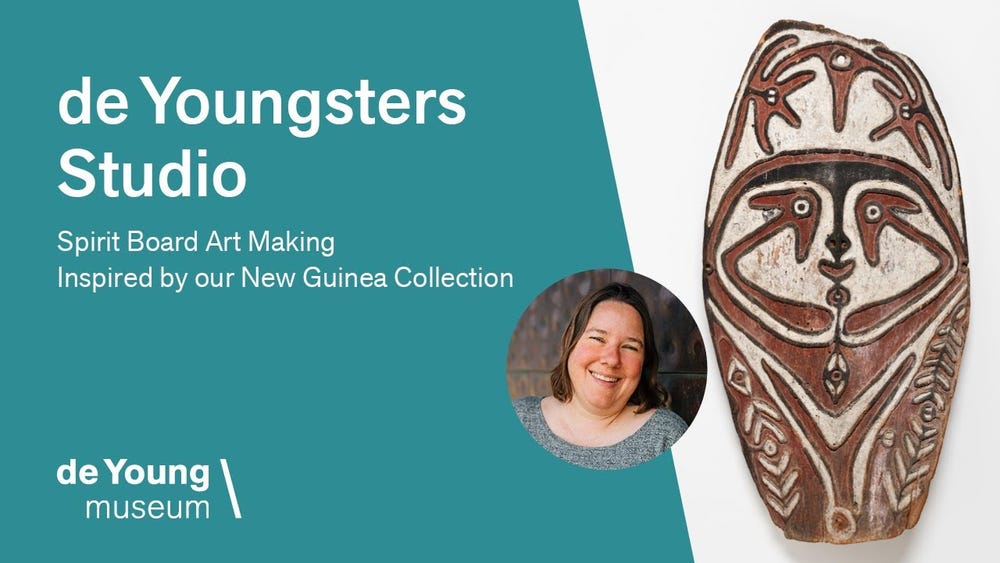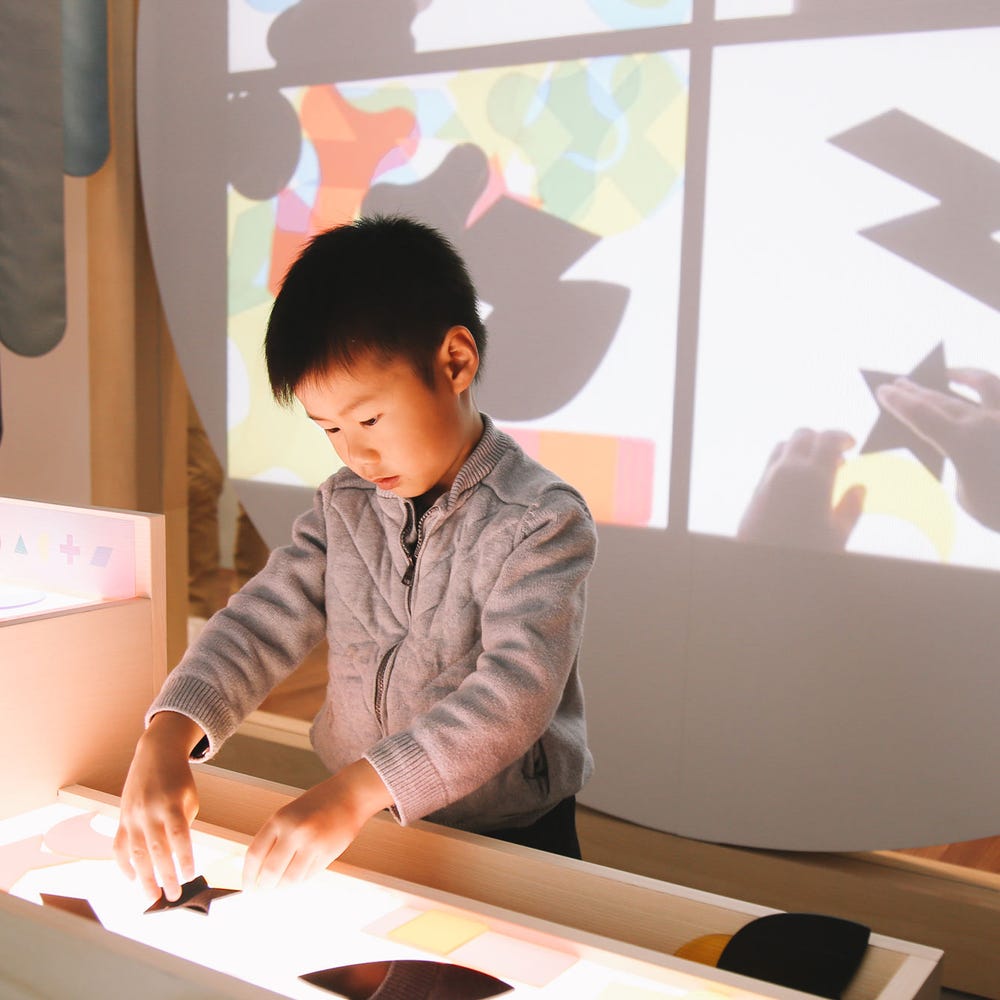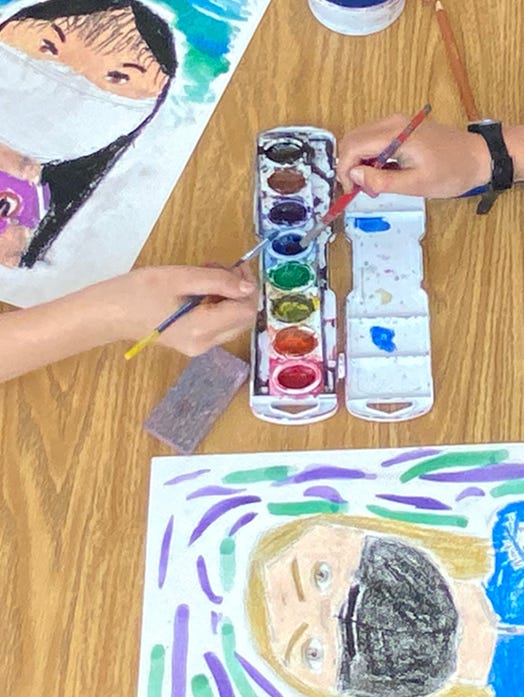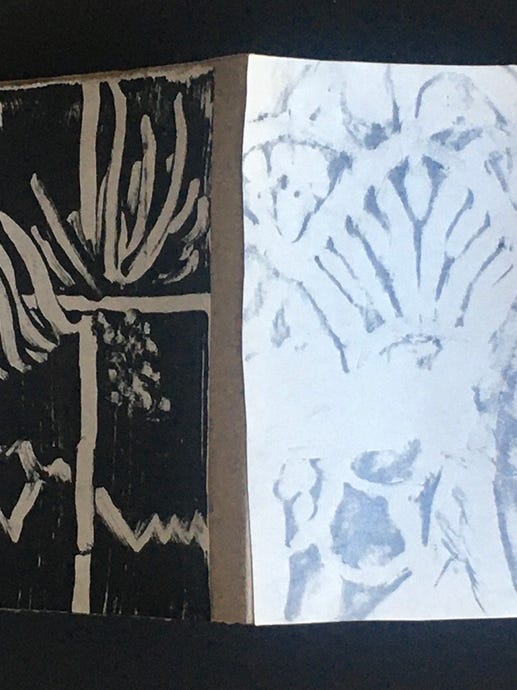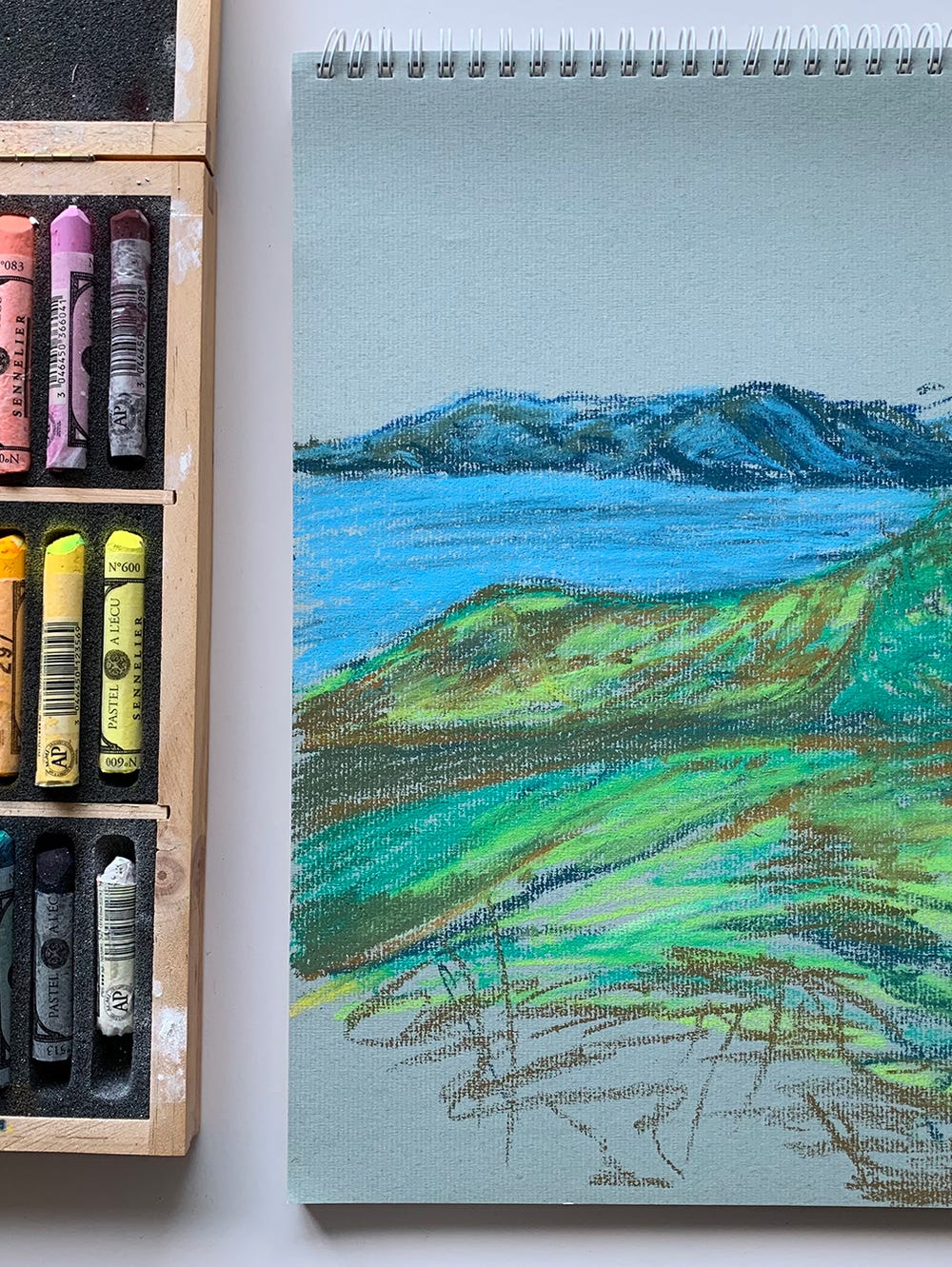de Youngsters Studio: Spirit Board Art Making Inspired by New Guinea Collection
By Jill McLennan, Senior Teaching Artist
May 29, 2020
This lesson focuses on the art of the Gulf of Papua from the Island of New Guinea. Located along the southern coast of New Guinea, communities are built along the Fly River and its surrounding deltas and mangrove forest. Spirit boards or kópe depict individual ancestral spirits and are hung or placed inside of ceremonial houses. A carved spirit board is sacred, as communities believe the ancestors guide the carvers in their design. The board contains the spirit of the ancestor, allowing them to communicate with the spirit world through the object.
We will create our own spirit board to honor a person or an aspect of the natural world from our own life.
- Who or what will your spirit board honor from your life?
- Will your spirit board connect to nature, or to a person or a plant or animal that is important to you?
When we look at this kópe, or spirit board, the face of the spirit figure emerges from the center of the design. The design depicts features representing abdomen, navel, and other body parts as well as symbols of natural elements and the spirit world. One of the circles on the board is the navel or belly button. The navel represents the place where the spirit enters the board and connects the earthly realm and the spiritual realm.
Questions to Consider
- Do you see shapes or patterns from nature in this board?
- Do you see any reference to a human figure or to animals?
- What parts of this story will inspire your own spirit board?
- Will your spirit board connect to nature, or to a person or an animal that is important to you in your life?
- What shapes and patterns will you use to connect your spirit board to your idea?
Materials
- Scissors
- Brown paper bag
- Pencil
- White glue
- Scratch paper
- Construction paper
- Oil pastels or other drawing materials
Steps
- Cut open the paper bag and cut out a large oval shape from the side of the bag, to use as your spirit board background. Retrace that shape two more times on other parts of the bag (one section could include the handle of the bag). Cut out and glue all three parts together and place some books on top to flatten. Save the rest of the bag to use for your shapes.
- Looking at the spirit board sample, make a few sketches of shapes and designs that you see on scratch paper. Add some of your own shapes based on ones you’ve seen in nature, such as leaves, shells, or flowers. Put these ideas together to create your own patterns for your spirit board design.
Sketch a few ovals on your scratch paper to plan your composition. Use symmetry to guide how you will arrange shapes and patterns around your board. (“Symmetry” means the same on both sides.) - Think about how you will alter the outside oval on your board to emphasize its meaning. Lay your board on top of the remaining side of your paper bag. Trace around it and add some shapes around the edge. Add this piece by gluing it down onto the oval layers (see detail below).
- Using colored construction paper, cut out shapes. You can fold your paper first to cut two of the same shape at once. Lay out the shapes on your board and move them around to decide where they should be placed. Remember to keep your design symmetrical. Look at the positive and negative space around your board. (Negative space is the area around and in between your cut out shapes.) Adjust the size of your shapes so they fit together. You can also layer shapes on top of other shapes.
After planning out your design, glue the shapes down. - Look at your arrangement of shapes and decide where more detail or definition is needed. In the museum object, the carver added details such as doubled outlines, dots, and dashes to their design. Using drawing materials such as oil pastels, add these finishing details such as outlining your shapes to your design.
Reflect
After creating your spirit board, consider the following questions:
- How were you inspired by the art of New Guinea and how did you make your design unique?
- What does your spirit board mean to you?
- Where will you hang it in your home?
- What will you be reminded of when you look at your board?
Share
We would love to see what you make too, so please tag us on any social-media platform using the hashtag #deyoungsters or email us at families@famsf.org.
Additional Resources
- Christina Hellmich, “Carving the Story: Recovering Histories of Sepik Art in the Jolika Collection,” Journal de la Société des Océanistes, 146 | 2018, 97–105.
- Coaxing the Spirits to Dance; Art of the Papuan Gulf exhibition webpage, the Metropolitan Museum of Art, New York. https://metmuseum.org/exhibitions/listings/2006/papuan-gulf
- David Frankel, “Carving A Gope Board,” The Artefact: Journal of the Archaeological and Anthropological Society of Victoria, 2010, vol. 33, 49–55.
